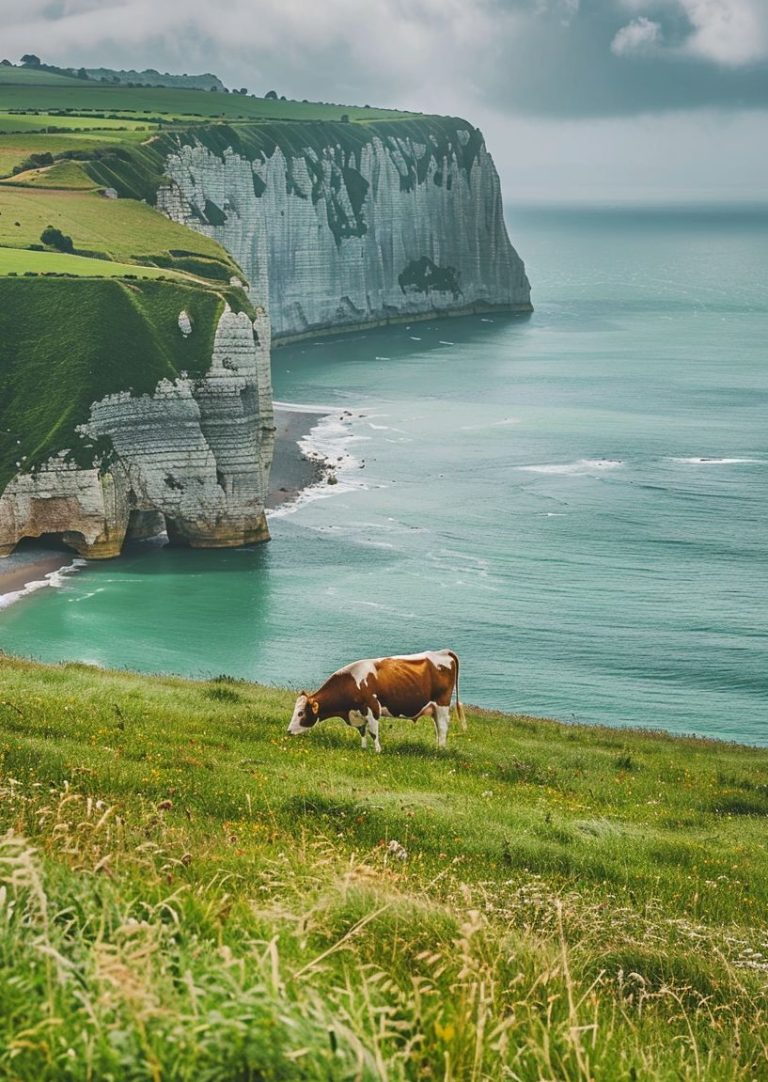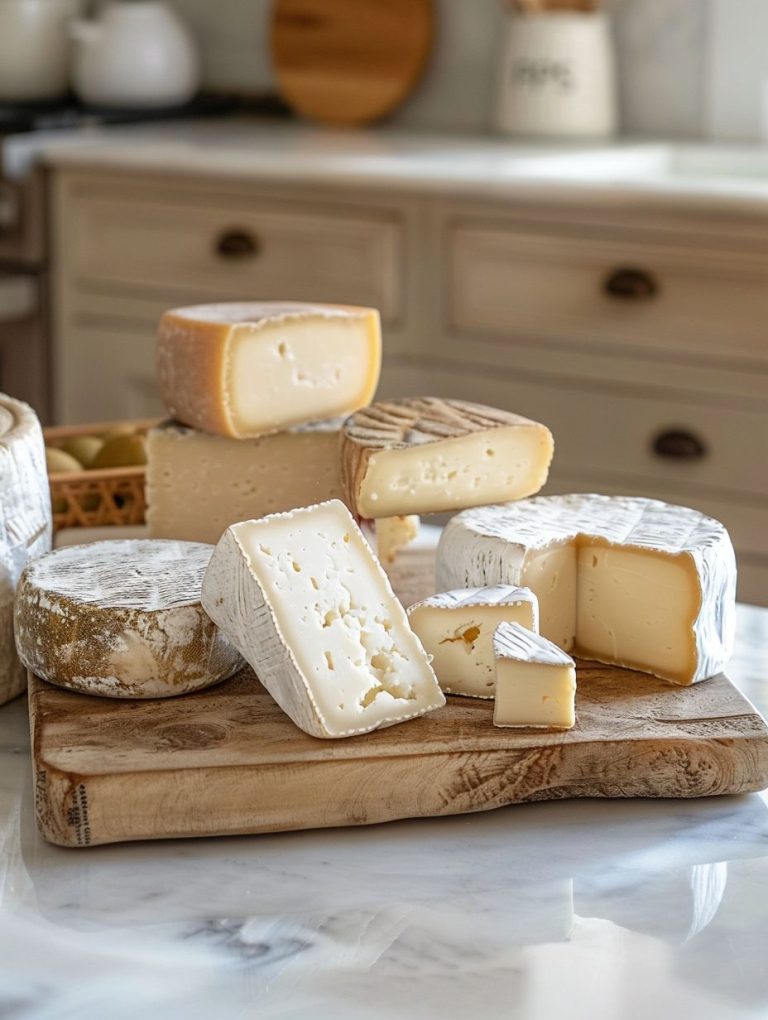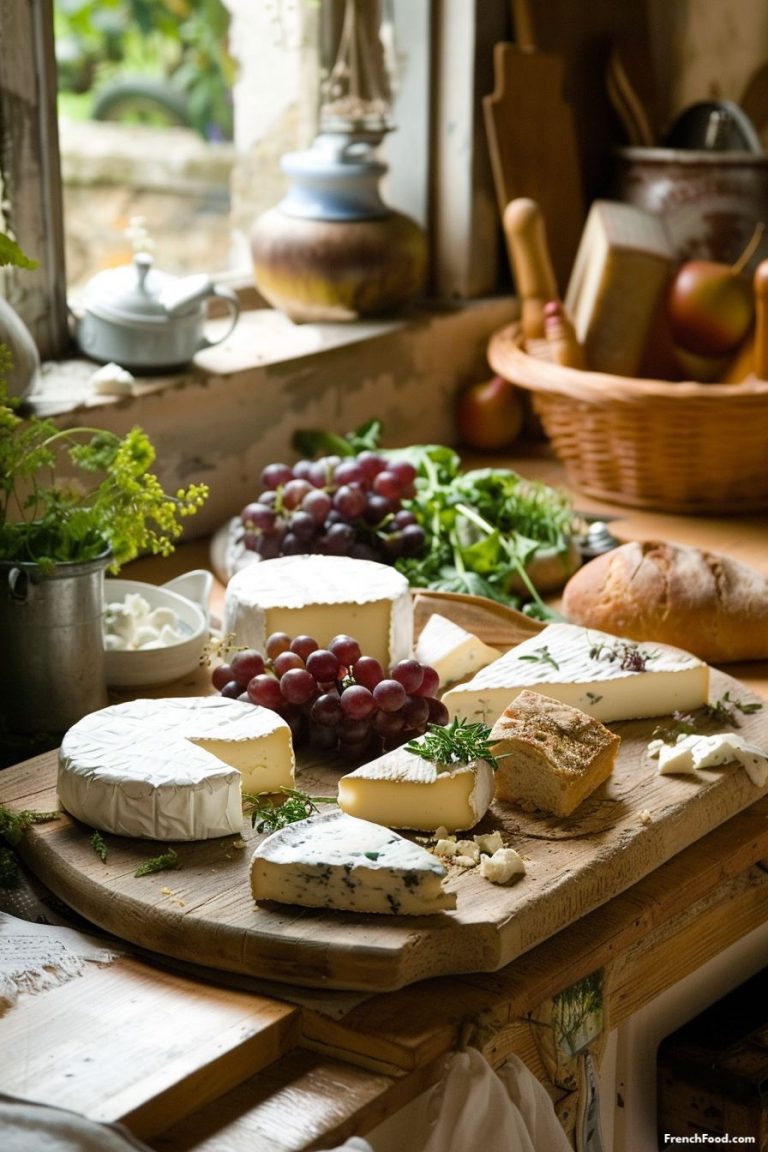Cheese Production in France: Traditional Techniques and Regions
We may earn a commission through all links on this website. As an Amazon Associate, we earn from qualifying purchases.France is renowned for its rich culinary heritage, and at the heart of this tradition lies the country’s celebrated cheese production. As one of the world’s leading cheese-producing nations, France boasts an unparalleled diversity of artisanal cheeses, each with its own unique flavor profile, texture, and production method.
From the creamy Brie of Normandy to the sharp, pungent Roquefort of the Midi-Pyrénées region, French cheesemakers have perfected the art of transforming simple milk into complex, mouthwatering delicacies. Underpinning this cheese-making prowess is a deep-rooted respect for regional terroir, traditional techniques, and the quality of the raw ingredients.
The cheese production industry in France holds the stories behind these artisanal masterpieces, the dedicated farmers and cheesemakers who bring them to life, and the cultural significance that cheese holds within French gastronomy.
Cheesemaking in France is an art passed down through generations, often closely tied to the terroir or the land’s unique characteristics.
History of Cheese in France
The history of cheese in France dates back thousands of years and is closely tied to the country’s cultural and culinary traditions.
Cheese production in France can be traced back to the Roman period, with certain types of cheese mentioned in ancient texts. During the Middle Ages, monasteries became important centers for cheese production, with different monastic orders developing their unique styles of cheese. After the Romans left, some cheese recipes like Maroilles, Munster, and Pont-L’Évêque remained in France.
The Renaissance period saw an increased interest in regional cuisine and the cheeses produced in specific areas. Cheesemaking methods were often passed down through generations. As the transportation network improved, cheeses began to be traded more widely, establishing certain cheeses as regional specialties.
In the early 20th century, the French government introduced the Appellation d’Origine Contrôlée system, which officially recognizes certain foods, including many cheeses, as having a specific regional origin. This system, based on the terroir concept, aims to protect the uniqueness of these products and prevent the misuse of their names.
On November 12, 2013, French law no. 2013-1010 defined the French term “cheese” detailing the production method and minimum dry matter content.
Cheese Making Process
The French cheesemaking process typically involves curdling milk (cow, goat, or sheep), separating curds from whey, and then subjecting the curds to various processes like aging, pressing, and washing. The specifics of each stage can greatly impact the cheese’s final texture, flavor, and appearance.
French Cheese Regions
France is divided into many different regions, each with its unique cheesemaking tradition. Here are some of the most famous French cheese regions:
- Normandy: Located in northwestern France, this region is known for its lush pastures and high-quality dairy products. Famous cheeses from this region include Camembert, Livarot, Pont-l’Evêque, and Neufchâtel.
- Île-de-France: This region is centered on the capital, Paris. The most famous cheese from Île-de-France is Brie, known as the “Queen of Cheeses”.
- Rhône-Alpes: This region includes the French Alps and is known for its mountain cheeses. Cheeses such as Reblochon, Beaufort, Abondance, and Tomme de Savoie come from this area.
- Auvergne: Known for its volcanic soil and rich pastures, Auvergne is home to cheeses such as Bleu d’Auvergne, Cantal, and Saint-Nectaire.
- Burgundy (Bourgogne): This famous wine region also produces several renowned cheeses, including Epoisses and Aisy Cendré.
- Loire Valley: This fertile region, known for its historic chateaux and fine wines, also produces a variety of goat cheeses like Crottin de Chavignol and Sainte-Maure de Touraine.
- Alsace: Located in northeastern France, Alsace is known for Munster cheese, characterized by its strong aroma and smooth texture.
- Franche-Comté: This eastern region of France is famous for Comté cheese, a hard cheese often compared to Gruyère.
- Corsica: This island region is known for its unique sheep’s and goat’s milk cheeses, including Brocciu and Fleur du Maquis.
- Aquitaine: Located in southwestern France, this region is known for Ossau-Iraty, a sheep’s milk cheese, and Cabécou, a soft goat’s cheese.
These regions are only a snapshot of the diverse cheesemaking culture in France. Each region has a unique climate, terrain, and local traditions, all of which contribute to the characteristics of their cheese.
French Cheese Labels
When it comes to French cheese, labels are not just for branding. They serve as quality assurance and an indicator of geographical origin.
In France, AOC (Appellation d’Origine Contrôlée) and AOP (Appellation d’Origine Protégée) are labels given to products with strong geographical ties. Another label is IGP (Indication Géographique Protégée) for products with a less strict geographical origin.
These labels signify that the cheese was made in a specific region following traditional methods.
Most Exported Cheeses
The crown jewels of French cheese exports include Camembert, Brie, Roquefort, and Comté. These cheeses are cherished globally, thanks to their distinct flavors and versatility in culinary uses. They’re often found gracing cheese boards, melting in gourmet recipes, or paired with wines at fine dining establishments worldwide.
Where to Buy Cheese
In France, the best place to buy cheese is at local fromageries, or specialized cheese shops that offer a vast selection and expert advice. Street markets are also excellent places to discover regional varieties from the producers. Supermarkets usually have a wide range of both artisanal and industrial cheeses.
In the USA, French cheeses are available at gourmet grocery stores, specialty cheese shops, and some larger supermarkets. Online platforms also offer a wide selection of French cheeses, often with the convenience of home delivery.







